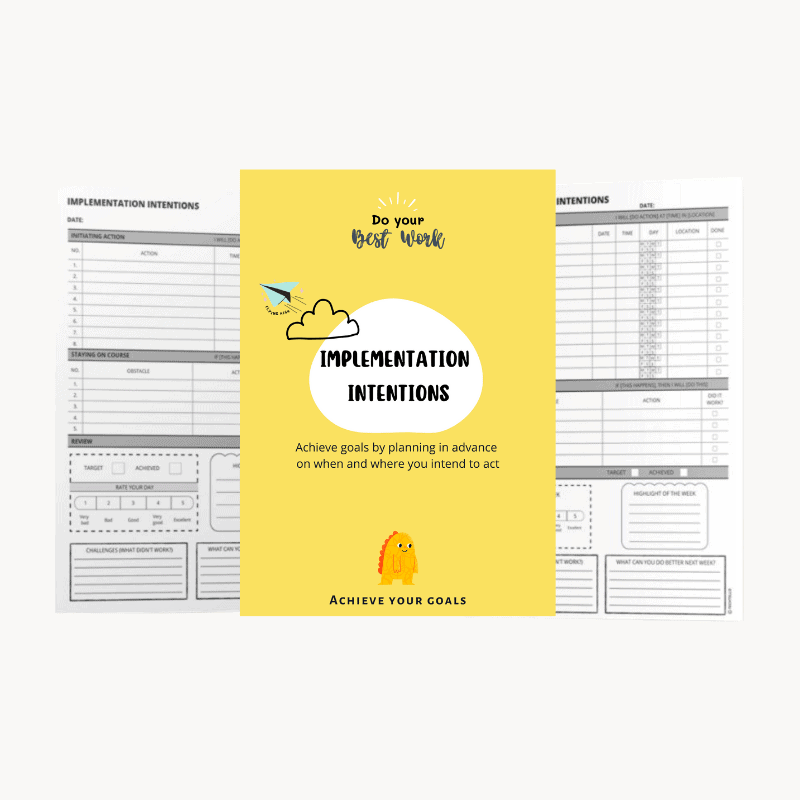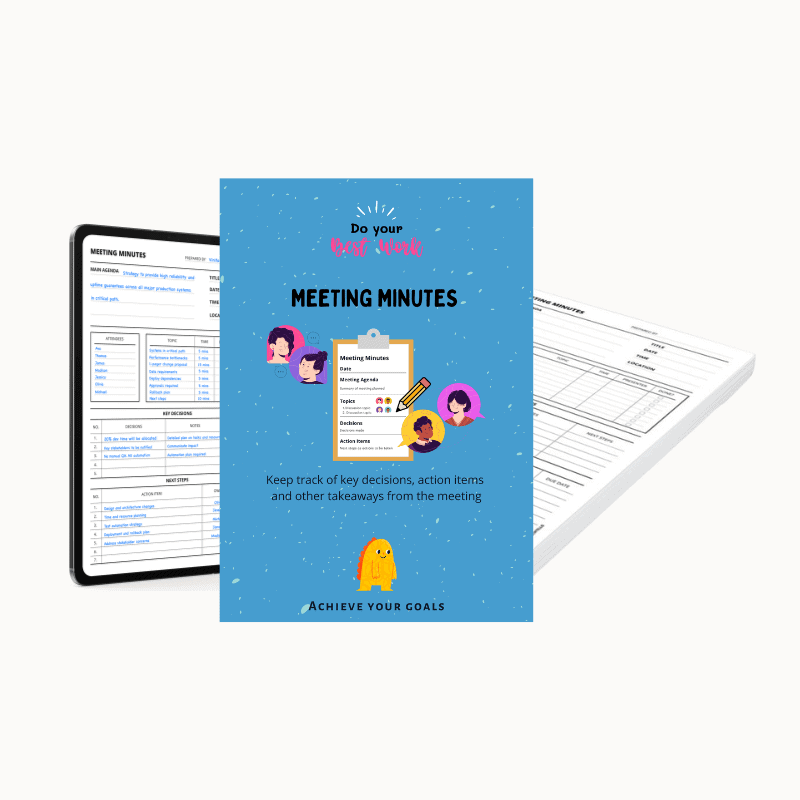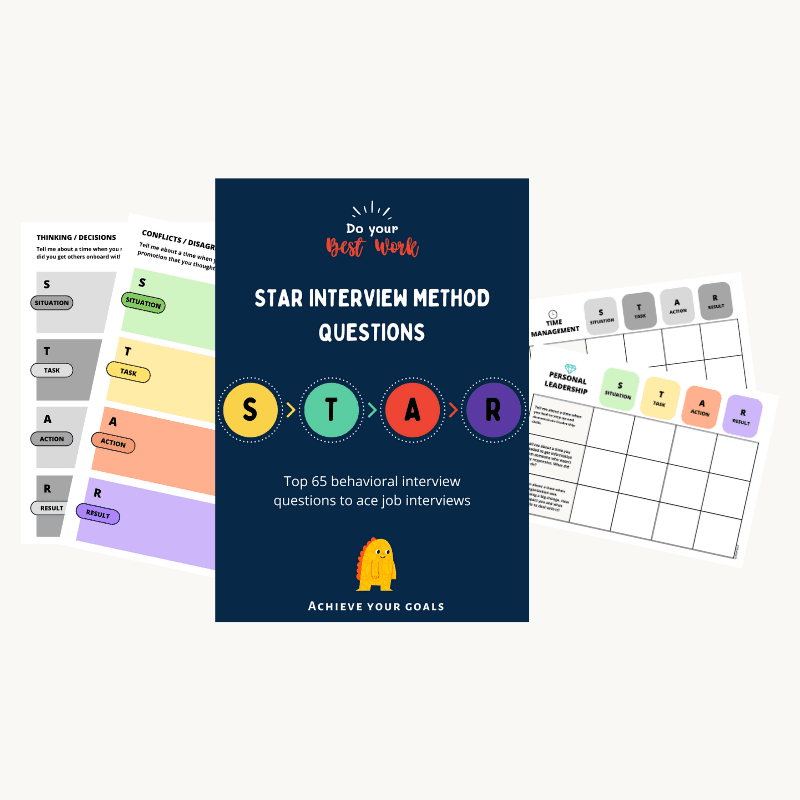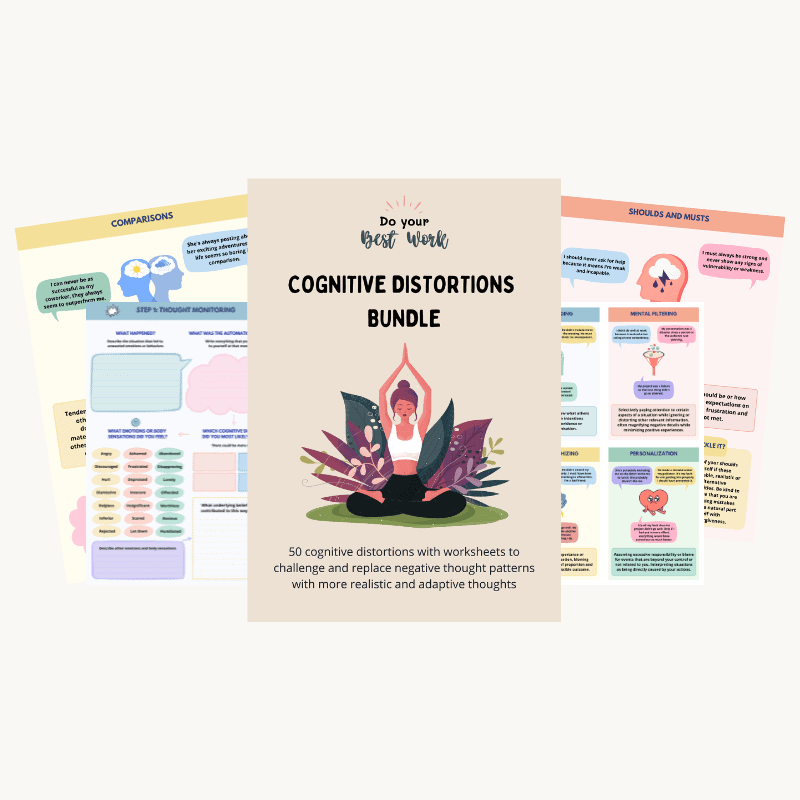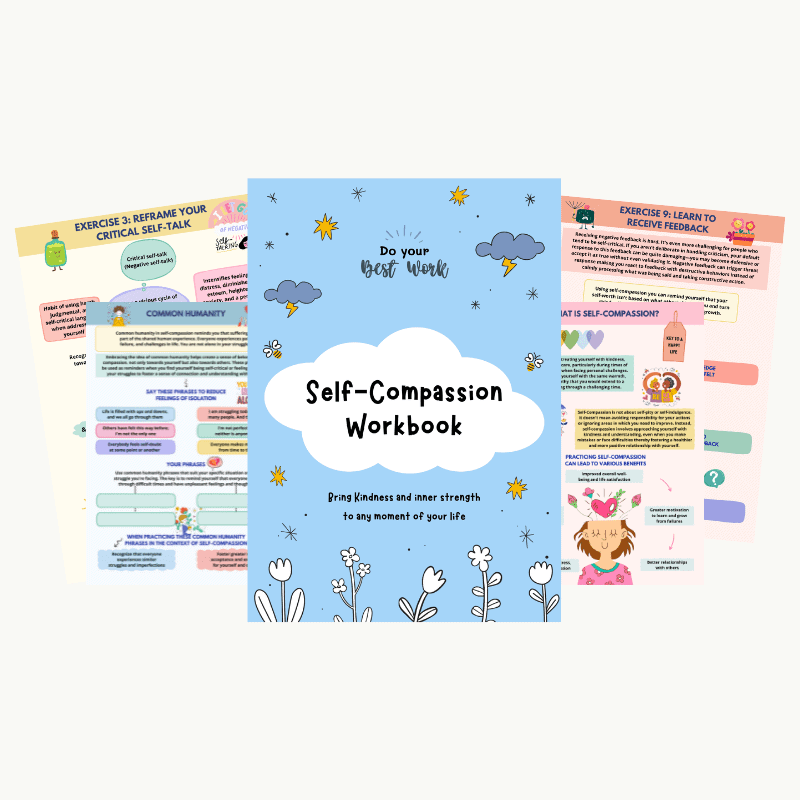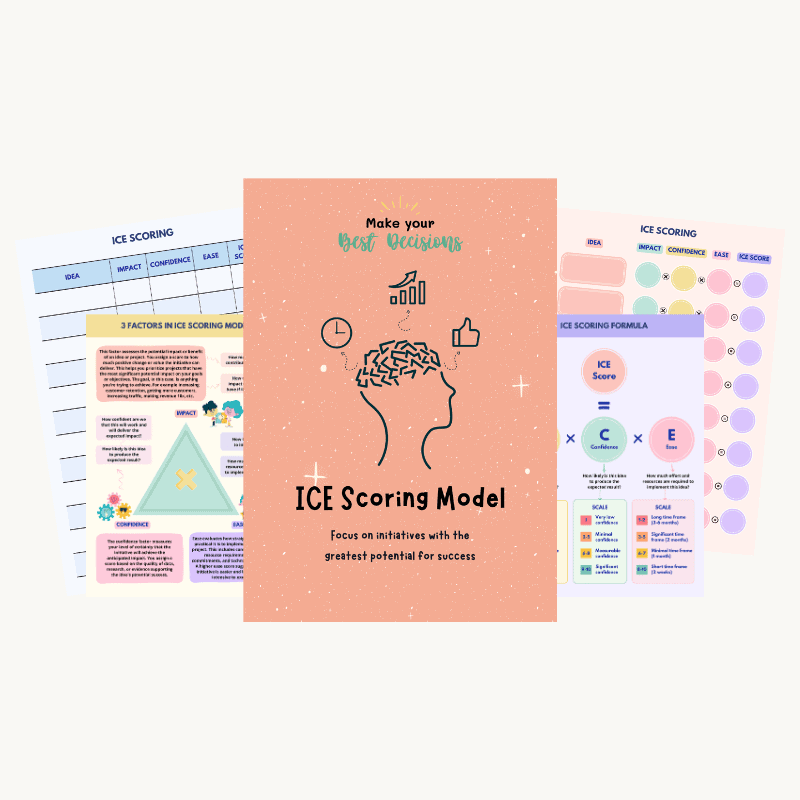Struggling To Be Productive? Use These 3 Productivity Frameworks To Get Real Work Done

I struggled with these three things most during my career—identifying what deserves my attention and what shouldn’t be done at all, giving life to my goals by utilizing the right opportunities and taking action, and staying focused by avoiding distractions when I actually get down to work.
Doing well in just one area wasn’t an option. To succeed in my goals, I had to perform on all three dimensions—prioritization, initiating action and staying focused.
For the longest time, I applied makeshift strategies to get through the day. When I felt challenged in any of these areas, instead of identifying the real source of my problem and investing in a long-term solution, I used quick and dirty solutions to cover up my discomfort.
But these band-aid solutions that got me temporary relief in the moment only aggravated my problem in the long run. As my work responsibilities and scope increased, so did the impact of my decisions—what was I prioritizing, how was I spending my time, was I realizing the opportunities at the right time, what were the biggest time suckers?
My survival strategies that worked earlier no longer served me right. Rather, they caused more pain and angst. Too many things vied for my attention. I had too much stuff on my mind. Demands of my work combined with an ad hoc approach to dealing with these difficulties caused immense frustration which further hurt my productivity.
I was at a point in my career where the cost—mentally as well as physically—of not putting my time to best use was significantly high. That’s when I decided to get rid of my avoidance and makeshift tactics. I decided to face the real problem and identify a solution that actually works.
I believe in the discipline of mastering the best that other people have ever figured out. I don’t believe in just sitting down and trying to dream it all up yourself. Nobody’s that smart.
— Charlie Munger, The Complete Investor
After researching hundreds of frameworks and putting them to use, these 3 productivity frameworks stood out. They were simple to understand, adapt and apply. Each framework addresses one key area where I needed help. Together they help me prioritize what matters, stick to an action plan and deeply focus on the task at hand while I am on it:
- Eisenhower Productivity Matrix for prioritization
- Implementation intentions for initiating action
- Pomodoro technique for staying focused
Let’s dive deep into each of these frameworks.
Eisenhower Productivity Matrix
The Eisenhower Matrix, also referred to as Urgent-Important matrix is a productivity, prioritization and time management framework designed to prioritize your most important work by categorizing tasks according to their urgency and importance. If you feel overwhelmed with a long list of things to do or not sure where to start, don’t worry. The 4 quadrants of the Eisenhower matrix are designed to make it easy for you to accomplish your most important work.
Dwight D. Eisenhower, the 34th President of the United States, had to make tough decisions continuously about which of the many tasks he should focus on each day. To navigate his priorities effectively and efficiently, he invented a simple decision-making tool, now the world-famous Eisenhower Matrix. His methods for time management, task management, personal productivity and prioritization have been studied across decades and used by many people.
What is urgent is seldom important and what is important is seldom urgent
— Dwight D. Eisenhower
Understanding the difference between the urgent and important tasks is crucial to put the Eisenhower Matrix to effective use. So let’s start there.
Eisenhower Productivity Planner Worksheet
Organize your to-dos and clear out unnecessary tasks with the help of this powerful planner.
Urgent is reactive
Urgent tasks require immediate attention. They are time sensitive and must be done now with negative consequences if you don’t complete them within the expected timeline. Most urgent tasks lead to short-term thinking and sub-optimal decision-making given the time constraint under which these tasks are performed.
For example:
- Finishing a project report due tomorrow.
- Attending a production bug impacting a large customer base.
- Fixing a leaking kitchen sink.
Important is proactive
Important tasks do not require immediate attention, but they help you achieve your long-term goals. They have a large impact on your success and require initiative, proactiveness and dedicated focused hours to do quality work. Carefully and thoughtfully planning these tasks ahead of time enables you to embrace opportunities, prevent problems, and make optimal decisions aligned with your long-term goals.
For example:
- Strategic thinking on new products to launch.
- Investing in tech platform stability.
- Feedback reviews to enable the team to perform better.
Distinguishing between urgent and important tasks enables you to make the best use of your time by dividing your work into the 4 quadrants of the Eisenhower Matrix. To put the Eisenhower matrix to use, go through each task one by one and separate them into four possibilities:
- Important and Urgent (Quadrant 1)
- Important and Not Urgent (Quadrant 2)
- Not Important and Urgent (Quadrant 3)
- Not Important and Not Urgent (Quadrant 4)
Important and Urgent (Quadrant 1): Reduce time spent here
These are the tasks that require your immediate attention and cannot be delayed further. Putting them off will not only lead to stress and anxiety, they’ll also have a negative impact on your success and growth.
Work that shows up in this quadrant is reactive, deals with crisis management and leads to suboptimal decision making. Important tasks become urgent in due course of time if delayed too much, not given proper attention or carried out without real interest.
Do these tasks now, but prioritize more work in Quadrant 2 to reduce time spent here.
Important and Not Urgent (Quadrant 2): Schedule these tasks
These tasks have a big impact on your long-term goals. They need not be done right away, but it’s important to schedule them for later when you can give your focused time and attention.
Proactively working on tasks in this quadrant without putting them off automatically reduces the time spent dealing with crises, freeing up time to do more forward-looking work.
Not Important and Urgent (Quadrant 3): Delegate and empower
These are the tasks that must be completed now but don’t affect your long-term goals. You don’t have to do them on your own and can be delegated to other members of your team—as an opportunity to expand their skill set or take on higher-level responsibilities.
Delegating work in this manner empowers them, builds trust and saves your time that’s better spent elsewhere.
Not Important and Not Urgent (Quadrant 4): Declutter and eliminate
Tasks in this quadrant give an illusion of productivity by keeping you busy, but must not be done at all. These are distractions which if not eliminated will get in the way of your goals. Simply delete these tasks and don’t waste your or others’ time and effort.
Implementation Intentions
Many people have positive intentions but they fail to act on them. They either forget to take action or seize the right opportunity. They get derailed by distractions or fall back to old habits.
Saying “I am going to run tomorrow” without specifying the exact time and location has a much lower chance of follow-through. That’s leaving it to chance—hoping you will remember to do the activity, find time to do it, and also feel motivated to do it at the right time. With vague commitments, it’s easy to stay busy by doing inconsequential work without ever getting around to doing the specific things you need to succeed. Implementation intention exactly solves this problem. They turn desires into concrete actions—I’m going to run every day for 10 mins at 7 pm outside my apartment. Introduced by psychologist Peter Gollwitzer in 1999, implementation intentions involve making a plan beforehand about when and where you intend to act. In other words, when situation x arises, I will perform response y.
You no longer need to decide or wait for the inspiration to strike. Should I jog in the morning or in the evening? Is it the right time to write? Should I replace a healthy option in this meal or the next one? You can initiate the intended response by simply acting on your plan.
The cues that can trigger a habit come in a wide range of forms—the feel of your phone buzzing in your pocket, the smell of chocolate chip cookies, the sound of ambulance sirens—but the two most common cues are time and location. Implementation intentions leverage both of these cues.
— James Clear, Atomic Habits
Another advantage of implementation intention is that with enough repetition, engaging in goal-directed behavior becomes automatic. You no longer need conscious intent. You automatically act when the situational cue presents itself. Without the hurdles of decision-making and the additional advantage of the right cues in your environment, you can prime yourself to act. Lastly, the formation of an action plan serves as a commitment to act. Research shows that breaking commitments generates discomfort which makes it more likely for you to stick to your plan.
Implementation Intentions Worksheet
Develop an action plan to avoid distractions, stay on track and achieve your goals with this template.
There are two parts to setting implementation intentions:
- Initiating the action
- Staying on course
Initiating the action
Create a specific plan detailing when and where you are going to initiate the desired behavior.
For example…
I will [DO ACTION] at [TIME] in [LOCATION].
- I will jog Monday to Saturday for ten minutes at 7 a.m. outside my apartment.
- I will replace fries with ten sticks of boiled baby carrots at 2 p.m. for lunch in my kitchen.
- I will practice public speaking for ten minutes at 8 p.m. right after dinner in my bedroom.
Staying on course
Things won’t always go according to plan. Unexpected situations might derail you from expected behaviors. Sometimes competing goals may demand your attention. Intended action can be thwarted by attending to attractive distractions. What do you do then? In situations like these, design implementation intentions using the “if-then” version.
Simply put, think about all the obstacles that might interfere with your goal and plan upfront on how to handle them. This way when you do encounter those hurdles preventing you from making progress in your goals, you can use the right strategy to turn them around. You can make the best possible decisions well in advance to keep you on track no matter what comes your way. You can be more flexible to adjust to the unexpected events in your life instead of letting them control your behavior and prevent you from achieving your goals.
For example…
If [THIS HAPPENS], then I will [DO THIS].
- If I cannot jog this Monday morning at 7 a.m. since I have to pick up my friend from the airport, then I will do it Monday evening at 6 p.m.
- If I cannot practice public speaking at 8 p.m. on Wednesday since I have to attend a birthday party, then I will practice at 6 a.m. on Wednesday right after I wake up in my bedroom.
- If I am presented with a dessert option when it’s my turn to eat healthy, then I will order fruits.
Pomodoro Technique
The Pomodoro Technique was created in the late 1980s by Francesco Cirillo for a more productive way to work and study. Cirillo was struggling to focus on his studies and complete assignments. He developed the Pomodoro technique as a way to improve concentration, productivity and efficiency.
The technique uses a timer to break down work into intervals, traditionally 25 minutes in length, separated by short breaks. Each interval is known as a Pomodoro, from the Italian word for ‘tomato’, after the tomato-shaped kitchen timer that Cirillo used as a university student.
The biggest strength of the Pomodoro method is in its simplicity. Here are the 5 steps to put the Pomodoro technique to practice:
- Identify your top goals for the day, break them down into small tasks and set estimate pomodoros (e.g. 1=25 mins of work) for each task.
- Set your timer and focus on a single task for the next 25 mins (or chosen Pomodoro time block).
- When the timer rings, mark off one Pomodoro and record what you completed.
- Take a break for 5 mins. Consciously plan these breaks to do something that staves off mental fatigue.
- Iterate 3-5 times and then take a longer break of 15-30 mins.
Hector Garcia Puigcerver writes in Ikigai “The Pomodoro Technique recommends 25 minutes of work and 5 minutes of rest for each cycle, but you can also do 50 minutes of work and 10 minutes of rest.” In other words Pomodoros are traditionally known for being 25 minutes long, but the technique does not enforce it. It’s quite flexible and allows you to choose your own pomodoro interval.
Pomodoro Planner Bundle
Break down your big goals into small tasks, limit distractions and build focus with this planner.
Use the Pomodoro technique if:
- You are feeling overwhelmed by the number of things to do and all the work ahead of you.
- Little distractions and interruptions eat up into your precious time.
- You want to get better at estimating how much work you can get done in a day.
- You want to train your brain to focus and concentrate without feeling fatigued.
- You enjoy gamification to achieve your goals.
- You want to have a clear measurement of your time and efforts.
Here’s why pomodoro method is extremely useful for boosting productivity and getting things done:
Rids of procrastination
Breaking down a big goal into small tasks and doing each one independently is less intimidating which makes it easy to get started. Instead of being overwhelmed by the enormity of all the work ahead of you, focusing on the next 25 minutes is easier because there’s less uncertainty involved.
Keeps distractions away
Distractions from phone, emails, and social media may appear brief, but they negatively impact your productivity by increasing the time it takes to refocus your attention. For example: Checking twitter for 1 min may require another 20 mins to get back and focus. Pomodoro technique helps you avoid these distractions that demand your time and attention and instead fully focus on the task in the present.
Helps measure and plan
By working in specific blocks of time, you can clearly measure the time taken to achieve a certain goal. This allows you to get better at estimation by reflecting on the time estimated and actual time spent. Working in small sessions shifts the idea of time from an abstract concept to an exact measure which enables you to give more realistic time estimates.
Combined these 3 powerful frameworks—Eisenhower matrix, implementation intentions and pomodoro technique—enable me to prioritize work that matters and eliminate time wasting efforts, take action by planning upfront and utilizing the right opportunities and actually get work done by using small blocks of time and staying focused.
Putting these frameworks to best use isn’t about perfection. What you need is the mindset to experiment, curiosity to identify what works (and what doesn’t), and willingness to change and adapt. Staffan Noteberg perfectly captures it in Pomodoro Technique Illustrated “Perfectionism prevents action. Waiting until you have devised the perfect solution to something is merely a form of procrastination.”


